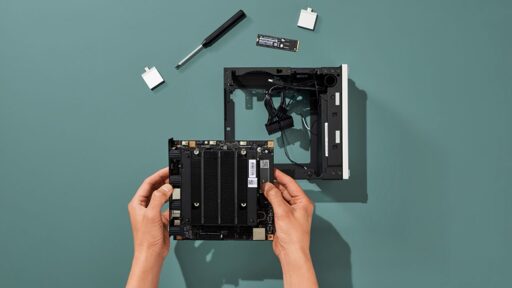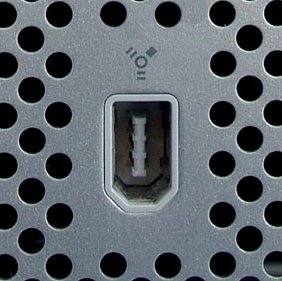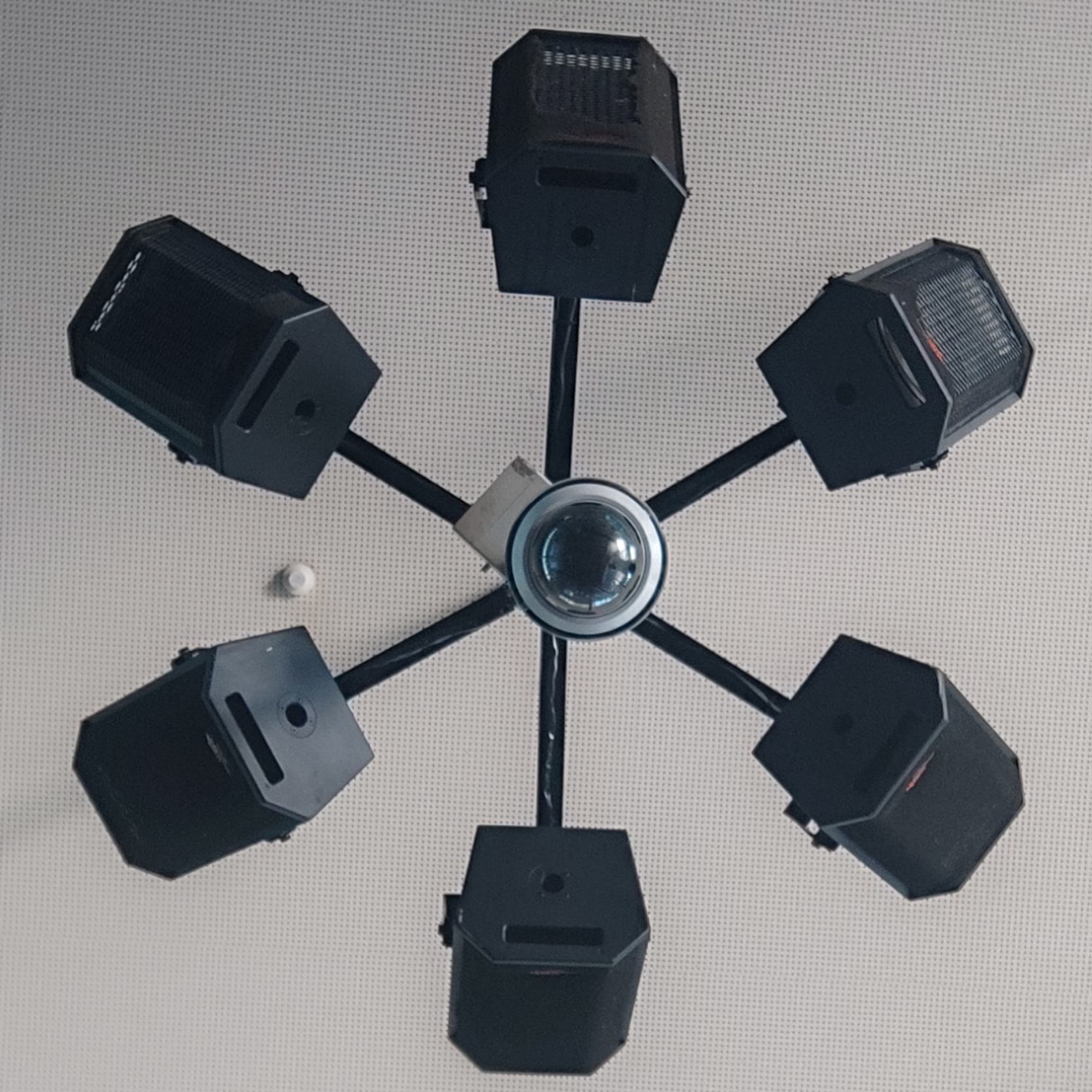The Framework Desktop is powered by an AMD Ryzen AI Max processor, a Radeon 8060S integrated GPU, and between 32GB and 128GB of soldered-in RAM.
The CPU and GPU are one piece of silicon, and they’re soldered to the motherboard. The RAM is also soldered down and not upgradeable once you’ve bought it, setting it apart from nearly every other board Framework sells.
It’d raise an eyebrow if it was a laptop but it’s a freakin’ desktop. Fuck you framework.
I get the frustration with a system being so locked down, but if 32gb is the minimum I don’t really see the problem. This pc will be outdated before you really need to upgrade the ram to play new games.
Seriously that’s really disappointing. It really seems like investors decides that they needed to “diversify” their offering and they need something with AI now … Framework was on a good path imo but of course a repairable laptop only goes so far since people can repair it and don’t need to replace it every 2 years (or maybe just replace the motherboard) so if you want to grow you need to make more products …
Well tbh they still do have repairable laptops, even new ones and all that, and the “excuse” is that the only way to properly use that specific AMD CPU is with that specific RAM and the non.soldered bus wasn’t enough, but still… i’ll stick to old #ThinkPads, thank you.
I agree. We need less soldered RAM designs. I thought repairability was something they appreciated.
Honestly this is exactly the product I was waiting for minisforum to make. I think this is actually a pretty solid move.
At first I was skeptical during the announcement and then I saw the amount of ram and the rack. Imho it is not for enduser but for business. In fact we have workloads that would be perfectly fit that computer so why not?
This is not really that interesting and kinda weird given the non-upgradability, but I guess it’s good for AI workloads. It’s just not that unique compared to their laptops.
I’d love a mid-tower case with swappable front panel I/O and modular bays for optical drives; would’ve been the perfect product for Framework to make IMO.
The mini’s are the latest new hotness for desktop computing. I’ve been running a dirt cheap $90US, mini for 2 years now. It fits extremely well on my desk, just tucked in under the monitor leaving plenty of room for all the other tasks I do daily.
Will it play the latest hot new video game? Nope. But it will run OnlyOffice, FreeCAD and FreeDoom just fine.
Really framework ? Soldered ram ? How dissapointing
The CEO of Framework said that this was because the CPU doesn’t support unsoldered RAM. He added that they asked AMD if there was any way they could help them support removable memory. Supposedly an AMD engineer was tasked with looking into it, but AMD came back and said that it wasn’t possible.
But the front panel is customizable
and more at people who want the smallest, most powerful desktop they can build
Well, there’s this:



Yeah, the screw holes didn’t fit, that’s why. And the cooler didn’t fit the case, obviously. And the original cooler not the CPU’s turbo.
Not really sure who this is for. With soldered RAM is less upgradeable than a regular PC.
AI nerds maybe? Sure got a lot of RAM in there potentially attached to a GPU.
But how capable is that really when compared to a 5090 or similar?
The 5090 is basically useless for AI dev/testing because it only has 32GB. Mind as well get an array of 3090s.
The AI Max is slower and finicky, but it will run things you’d normally need an A100 the price of a car to run.
But that aside, there are tons of workstations apps gated by nothing but VRAM capacity that this will blow open.
Useless is a strong term. I do a fair amount of research on a single 4090. Lots of problems can fit in <32 GB of VRAM. Even my 3060 is good enough to run small scale tests locally.
I’m in CV, and even with enterprise grade hardware, most folks I know are limited to 48GB (A40 and L40S, substantially cheaper and more accessible than A100/H100/H200). My advisor would always say that you should really try to set up a problem where you can iterate in a few days worth of time on a single GPU, and lots of problems are still approachable that way. Of course you’re not going to make the next SOTA VLM on a 5090, but not every problem is that big.
Fair. True.
If your workload/test fits in 24GB, that’s already a “solved” problem. If it fits in 48GB, it’s possibly solved with your institution’s workstation or whatever.
But if it takes 80GB, as many projects seem to require these days since the A100 is such a common baseline, you are likely using very expensive cloud GPU time. I really love the idea of being able to tinker with a “full” 80GB+ workload (even having to deal with ROCM) without having to pay per hour.
Exactly, 32 is plenty to develop on, and why would you need to upgrade ram? It was years ago I did that in any computer let alone a tensor workstation. I feel like they made pretty good choices for what it’s for
… but only OpenCL workloads, right?
No, it runs off integrated graphics, which is a good thing because you can have a large capacity of ram dedicated to GPU loads
Not really sure who this is for.
Second sentence in the linked article.
“To enable the massive 256GB/s memory bandwidth that Ryzen AI Max delivers, the LPDDR5x is soldered,” writes Framework CEO Nirav Patel in a post about today’s announcements. “We spent months working with AMD to explore ways around this but ultimately determined that it wasn’t technically feasible to land modular memory at high throughput with the 256-bit memory bus. Because the memory is non-upgradeable, we’re being deliberate in making memory pricing more reasonable than you might find with other brands.”
😒🍎
Edit: to be clear, I was only trying to point out that “we’re being deliberate in making memory pricing more reasonable than you might find with other brands” is clearly targeting the Mac Mini, because Apple likes to price-gouge on RAM upgrades. (“Unamused face looking at Apple,” get it? Maybe I emoji’d wrong.) My comment is not meant to be an opinion about the soldered RAM.
To be fair it starts with 32GB of RAM, which should be enough for most people. I know it’s a bit ironic that Framework have a non-upgradeable part, but I can’t see myself buying a 128GB machine and hoping to raise it any time in the future.
If you really need an upgradeable machine you wouldn’t be buying a mini-PC anyways, seems like they’re trying to capture a different market entirely.
According to the CEO in the LTT video about this thing it was a design choice made by AMD because otherwise they cannot get the ram speed they advertise.
seems like they’re trying to capture a different market entirely.
Yes that’s the problem.
That they want to sell cheap ai research machines to use for workstation?
That’s a poor attempt to knowingly misrepresent my statement.
Yeah hugely disappointed by this tbh. They should have made a gaming capable steam machine in cooperation with valve instead :)
This is an AI chip designed primarily for running AI workflows. The fact that it can game is secondary
Yeah exactly, its worthless… Even the big players already admit to the AI hype being over. This is the worst possible thing to launch for them, its like they have no idea who their customers are.
The AI hype being over doesn’t mean no one is working on AI anymore. LLMs and other trained models are here to stay whether you like it or not.
I mean, it’s not. You can do aí workflows with this wonderful chip.
If you wanna game, go buy nvidia
Yeah.
But that’s AMD’s fault, as they gimped the GPU so much on the lower end. There should be a “cheap” 8-core, 1-CCD part with close to the full 40 CUs… But there is not.
They still could; this seems aimed at the AI/ML research space TBH
Would 256GB/s be too slow for large llms?
It runs on the gpu
Framework releasing a Mac Mini was certainly not on my bingo card for this year.
Ok, should I know who framework is? I’ve been a PC gamer since forever and I’ve never heard of this company.
They make repairable laptops.
repairable and upgradable*
I know it’s an absolutely banal nitpick, but I think it’s unfortunately a revelation in the current laptop market that ~90% of a laptop stays good for a really really long time, and the other 10% can be upgraded piecemeal as the need arises. Obviously this was never news to the Desktop world, but laptop manufacturers got away with claiming this was impossible for laptops in the name of efficiency and portability.
Lmao the news about this desktop is strangling their website to the point of needing a 45 minute waiting list
The Lemmy Lick strikes again!
I visited their website literally within about 10 minutes of them announcing the product and I had to wait 8 minutes to get in.
If framework has, or had, one problem, it was that the main appeal of their products was the repairability, the products themselves were only okay in terms of specs. Well now they have really decent specs as well.
I could absolutely see schools wanting to deploy these to their students.
They did announce three major products today.
Yeah that touchscreen tablet convertible machine is what has me psyched. I’m not the target for it, and already own a 16, but I could see that thing selling well. I honestly think they came out with the desktop because they just kinda felt they needed a desktop.
I have a 16 and a 13, I thought I’d give away the 13 when I got the 16 but I keep using the 13 as well cause of how portable it is. Lot nicer to lounge about with the 13 than the 16.
I might get the 12 to replace my 13 and use it for drawing practice and web browsing. Performance wise it’d be a downgrade from my 1280p but I don’t really need the performance.
This is one stupid product. It really goes against everything the framework brand has identified with.
Desktops are already that, though. In order for them to distinguish themselves in the industry, they can’t just offer another modular desktop PC. They can’t offer prebuilts, or gaming towers, or small form factor units, or pre-specced you-build kits. They can’t even offer low-cost micro-desktops. All of those markets are saturated.
But they can offer a cheap Mac Studio alternative. Nobody’s cracked that nut yet. And it remains to be seen if this will be it, but it certainly seems like it’s lined up to.
I’d argue not. It’s as modular/repairable as the platform can be (with them outright stating the problematic soldered RAM), and not exorbitantly priced for what it is.
But what I think is most “Framework” is shooting for a niche big OEMs have completely flubbed or enshittified. There’s a market (like me) that wants precisely this, not like a framework-branded gaming tower or whatever else a desktop would look like.
It’s as modular/repairable as the platform can be
It can’t be. That’s the point.
AMD said no due to the platform and apparently the signal integrity not being up to snuff.
…said no to what?
Modular Ram modules (e.g. dram and I believe lpcamm)
Soldered ram is more efficient because it does not require big connectors and is closer to the CPU and GPU. 3D Vcache Is the ultimate examples or this.
Yes I’m aware. What’s your point?
I guess I’m not sure what you want Framework to due instead. Just not launch this at all? What alternative are you advocating for?
It’s a straight up gimmick flanderizing the brand identity.
Holy moly this is awesome! I am in for the 128GB SKU.
That’s 96GB of usable VRAM! And way more CPU bandwidth than any desktop Zen chip.
I know people are going to complain about non upgradable memory, but you can just replace the board, and in this case it’s so worth it for the speed/power efficiency. This isn’t artificial crippling, it physically has to be soldered, at least until LPCAMM catches on.
My only ask would be a full X16 (or at least a physical X16/electrical x8) PCIe slot or breakout ribbon. X4 would be a bit of a bottleneck for some GPUs/workloads… Does Strix Halo even support that?
How did you get from 128 GiB of RAM, as the reported specs, to 96 VRAM ?
“VRAM” has to be allocated to the integrated GPU in the BIOS, and reports (and previous platforms) suggest the max one can allocate is 96GB, or 3/4 of it.
I understand the memory constraints but it does feel weird for framework, is all I have to say. But that’s also the general trajectory of computing from what it seems. I really want lpcamm to catch on!
Apparently Framework did try to get AMD to use LPCAMM, but it just didn’t work from a signal integrity standpoint at the kind of speeds they need to run the memory at.
Sounds like it doesn’t bode well for the future of DIMMs at all, TBH.
You have a DIMM view of the future.
My AM5 system doesn’t post with 128GB of 5600 DDR5 at higher than 4400 at JEDEC timings and voltage. 2 DIMMs are fine. 4 DIMMs… rip. So I’d say the present of DIMMs is already a bit shaky. DIMMs are great for lots of cheap RAM. I paid a lot less than what I’d have to pay for the equivalent size of RAM in a Framework desktop.
Eventually most system RAM will have to be packaged anyway. Physics dictates that one pays a penalty going over pins and mobo traces, and it gets more severe with every advancement.
It’s possible that external RAM will eventually evolve into a “2nd tier” of system memory, for background processes, spillover, inactive programs/data, things like that.
It’s already fourth tier after L1, L2, L3 caches.
Maybe something like optane will make a comeback. Having 16gb of soldered RAM and 500gb of relatively slow, but inexpensive optane RAM would be great.
DRAM is so cheap and ubiquitous that they will probably keep using that, barring any massive breakthroughs. The “persistence after power-off” is nice to have, but not strictly needed.
deleted by creator
What’s a SKU? Google just says “Stock Keeping Unit”, but I don’t think that’s correct in this context.
Basically another word for ‘Product Number’ or ‘P/N’ for short.
It’s correct. A product with various options will have each combination of options under a different SKU. It’s a singular number that identifies an exact version of a product.
In this context, SKU refers to a variant of this product. That is the correct acronym as I understand
its used to mean a new product that you specifically have to keep track of. e. g if you found framework desktops in a store, it wouldnt all be sold under 1 sku. all 3 ram capacities would be 3 different bar codes
a new product
not only new
As others said.
In this context it would be one of the CPU/Memory combinations framework offers: https://en.wikipedia.org/wiki/List_of_AMD_Ryzen_processors#Strix_Halo_(Zen_5/RDNA3.5/XDNA2_based)
but you can just replace the board
The board is like, the whole computer tho. The mobo, CPU, GPU and RAM are all the same component. It’s everything Framework is supposed to oppose. That took them what, 4 years? to throw away their values?
It’s what happens when you go through rounds of funding.
They also announced three other products (one new, two refreshes) which are still being actively developed and are fully-modular devices at low cost. If they’re “throwing away their values,” they’re not doing it very well.
It’s never a single step process. These things happen slowly, bit by bit. It’s the beginning of the end.
If this is it happening bit by bit, then why is most of the news about them doubling down on their principles? Why did they make clear what they were doing and why, and talk about their work to make it modular, instead of trying to hide it or sweep it under the rug?
This sort of doomerism and slippery slope purity test nonsense is exactly why niche companies that do what people value eventually go under, leaving us with just the awful ones. This isn’t a betrayal of their values. This isn’t the beginning of the end. It’s just a choice they made, and all of the other choices they made confirm that they’re still doing stuff the way they were.
Edit: I’m not saying you have to buy it, or that you shouldn’t make clear to the company you don’t think this comports with what you want them to value. But writing them off forever based on this one product seems so self-defeating.
If this is it happening bit by bit, then why is most of the news about them doubling down on their principles?
Its called marketing.
Why did they make clear what they were doing and why
…I don’t understand the question. Why wouldn’t they? Why does being clear about why they’ve abandoned their mission excuse anything?
exactly why niche companies that do what people value
That’s the opposite of what’s happening though.
I feel like this is a big miss by framework. Maybe I just don’t understand because I already own a Velka 3 that i used happily for years and building small form factor with standard parts seems better than what this is offering. Better as in better performance, aesthetics, space optimization, upgradeability - SFF is not a cheap or easy way to build a computer.
The biggest constraint building in the sub-5 liter format is GPU compatibility because not many manufacturers even make boards in the <180mm length category. Also can’t go much higher than 150-200 watts because cooling is so difficult. There are still options though, i rocked a PNY 1660 super for a long time, and the current most powerful option is a 4060ti. Although upgrades are limited to what manufacturers occasionally produce, it is upgradeable, and it is truly desktop performance.
On the CPU side, you can physically put in whatever CPU you want. The only limitation is that the cooler, alpenfohn black ridge or noctua l9a/l9i, probably won’t have a good time cooling 100+ watts without aggressive undervolting and power limits. 65 watts TDP still gives you a ryzen 7 9700x.
Motherboards have the SFF tax but are high quality in general. Flex ATX PSUs were a bit harder to find 5 or 6 years ago but now the black 600W enhance ENP is readily available from Velkase’s website. Drives and memory are completely standard. m.2 fits with the motherboard, 2.5in SATA also fits in one of the corners. Normal low profile DDR5 is replaceable / upgradeable.
What framework is releasing is more like a laptop board in a ~4 liter case and I really don’t like that in order to upgrade any part of CPU, GPU or memory you have to replace the entire board because it’s soldered on APU and not socketed or discrete components. Framework’s enclosure hasn’t been designed to hold a motherboard+discrete GPU and the board doesn’t have a PCIe slot if you wanted to attach a card via riser in another case. It could be worse but I don’t see this as a good use of development resources.
I think the biggest limiting factor for your mini PC will always be the VRAM and any workload that enjoys that fast RAM speed. Really, I think this mini PC from framework is only sensible for certain workloads. It was poised as a mobile chip and certainly is majorly power efficient. On the other hand I don’t think it is for large scaling but more for testing at home or working at home on the cheap. It isn’t something I expected from framework though as I expected them to maintain modularity and the only modularity here is the little USB cards and the 3D printed front panel designs lol
Edit
Personally I am in that niche market of high RAM speed. Also, access to high VRAM for occasional LLM testing. Though it is an AMD and I don’t know if am comfortable switching from Nvidia for that workload just yet. Renting a GPU is just barely cheap enough.
Much like their laptops, I’m all for the idea, but what makes this desirable by those of us with no interest in AI?
I’m out of that loop though I get that AI is typically graphics processing heavy, can this be taken advantage of with other things like video rendering?
I just don’t know exactly what an AI CPU such as the Ryzen AI Max offers over a non-AI equivalent processor.
what makes this desirable by those of us with no interest in AI?
Juat maybe not all products need to be for everyone.
Sometimes it’s fine if a product fits your label of “Not for me”.There is a massive push right now for energy efficient alternatives to nvidia GPUs for AI/ML. PLENTY of companies are dumping massive amounts of money on macs and rapidly learning the lesson the rest of us learned decades ago in terms of power and performance.
The reality is that this is going to be marketed for AI because it has an APU which, keeping it simple, is a CPU+GPU. And plenty of companies are going to rush to buy them for that and a very limited subset will have a good experience because they don’t have time sensitive operations.
But yeah, this is very much geared for light-moderate gaming, video rendering, and HTPCs. That is what APUs are actually good for. They make amazing workstations. I could also see this potentially being very useful for a small business/household local LLM for stuff like code generation and the like but… those small scale models don’t need anywhere near these resources.
As for framework being involved: Someone has kindly explained to me that even though you have to replace the entire mobo to increase the amount of memory, you can still customize your side panels at any moment so I guess that is fitting the mission statement.
For modularity: There’s also modular front I/O using the existing USB-C cards, and everything they installed uses standard connectors.
There’s lots of workstation niches that are gated by VRAM size, like very complex rendering, scientific workloads, image/video processing… It’s not mega fast, but basically this can do things at a reasonable speed that you’d normally need a $20K+ computer to even try. Like, if something takes hours on an A6000 Ada or an A100, just waiting overnight on one of these is not a big deal. Cashing or failing to launch on a 4090 or 7900 XTX is.
That aside, the IGP is massively faster than any other integrated graphics you’ll find. It’s reasonably power efficient.
I hate how power hungry the regular desktop platform is so having capable APUs like this that will use less power at full load than a comparable CPU+GPU combo at idle, is great, though it needs to become a lot more affordable.
Production costs are not low either, and AMD still needs to profit. AMD’s APUs are already very affordable.
Much like their laptops
Its nothing like their laptops, thats the issue :/ Soldered in stuff all around, nonstandard parts that make it useless for use as a standard PC or gaming console.
Sorry, I was stating that “much like their laptops, I like the idea of these desktops.” I was not trying to insinuate that they themselves are alike.
Now, can we have a cool European company doing similar stuff? At the rate it’s going I can’t decide whether I shouldn’t buy American because I don’t want to support a fascist country or because I’m afraid the country might crumble so badly that I can’t count on getting service for my device.
Wait I thought they were a Taiwanese company?
This comment made me double check. They’re from San Francisco: https://en.m.wikipedia.org/wiki/Framework_Computer
I’d prefer to buy taiwanese tbh. 😉
I could envision MNT Research trying this in the future, but not for now.
Wow, that stuff looks awesome! Thanks for sharing 🙏
This is a standard a370 mini PC at a high price.
There’s Beelink, Minisforum, Aoostar and many others.
The AI max chips are a completely different platform, more than double the physical silicon size of most minipc chips.
Most miniPC vendors have already announced AI Max products:
https://www.gmktec.com/blog/gmktec-a-global-leader-in-ai-mini-pcs-unveils-the-amd-ryzen-ai-max-395
But Framework released it now.
Nope, they’re just available to pre-order with an estimate of shipping from Q3 this year. They’re not shipping now.
I just checked, the gmktec link above says that their product is supposed to ship in Q1-Q2 this year, earlier than framework’s.The person above you confidently posted that it’s shipping now and got an up vote despite being wrong.
I never understand people who confidently post wrong things that are easily googlable.

























